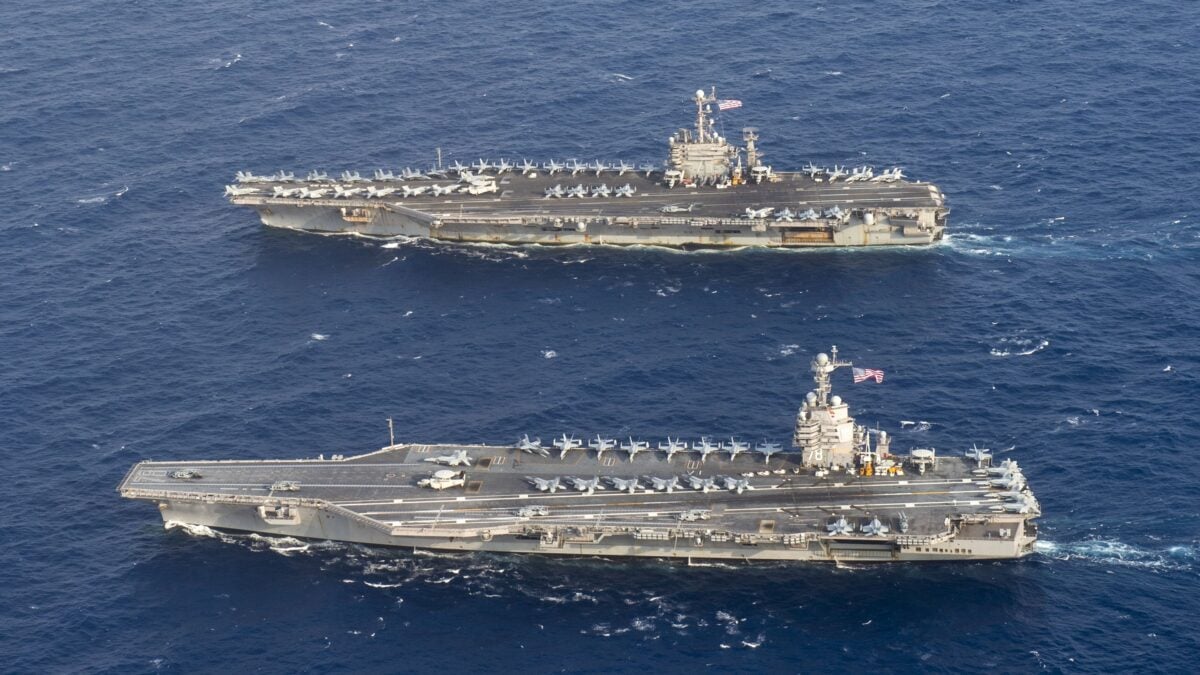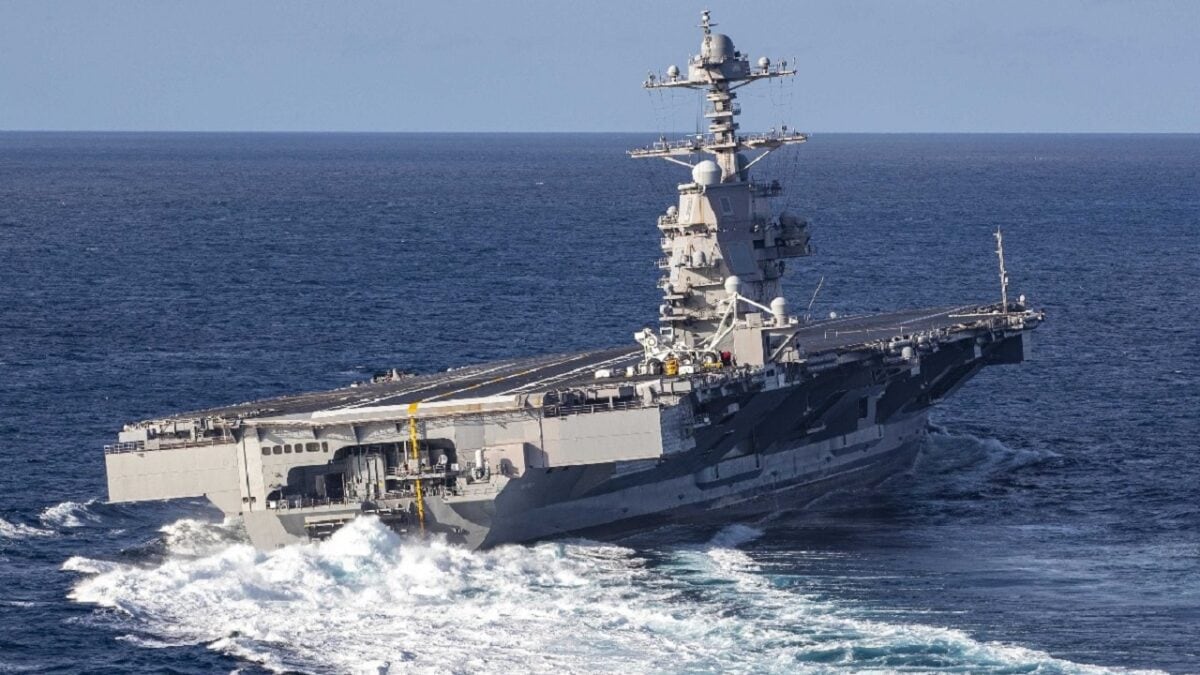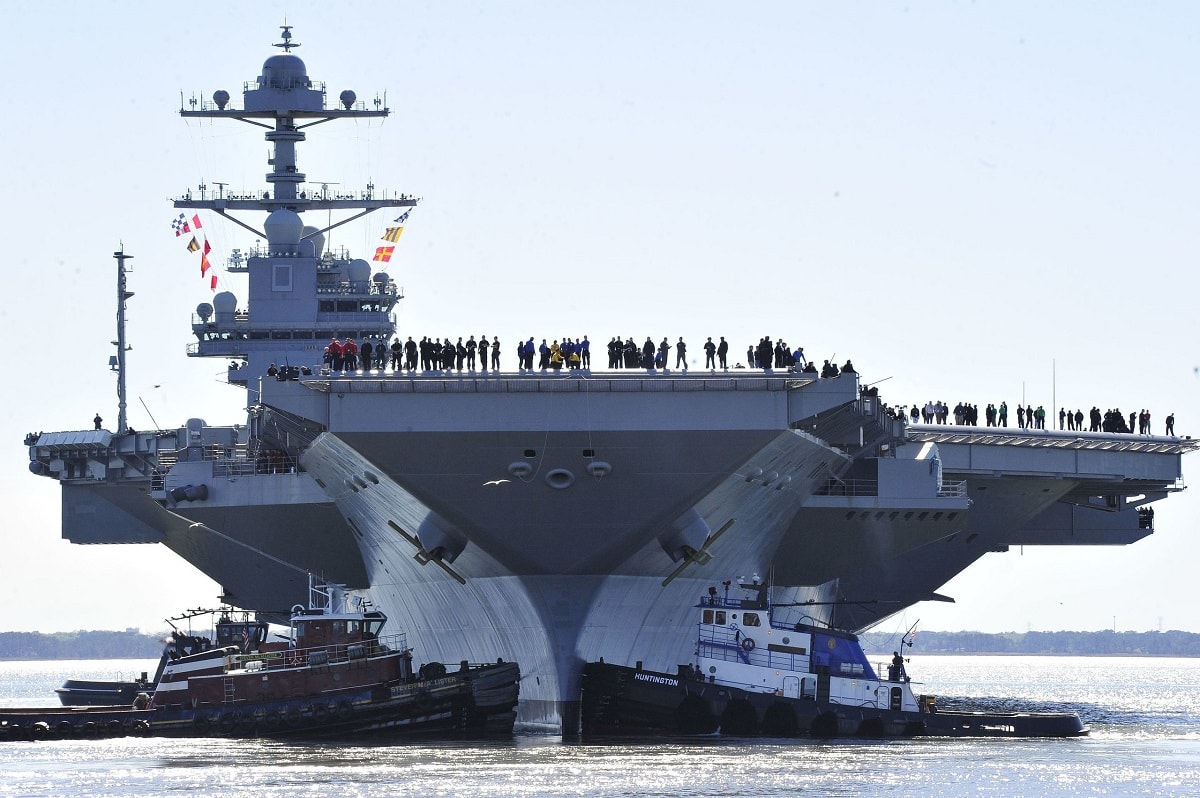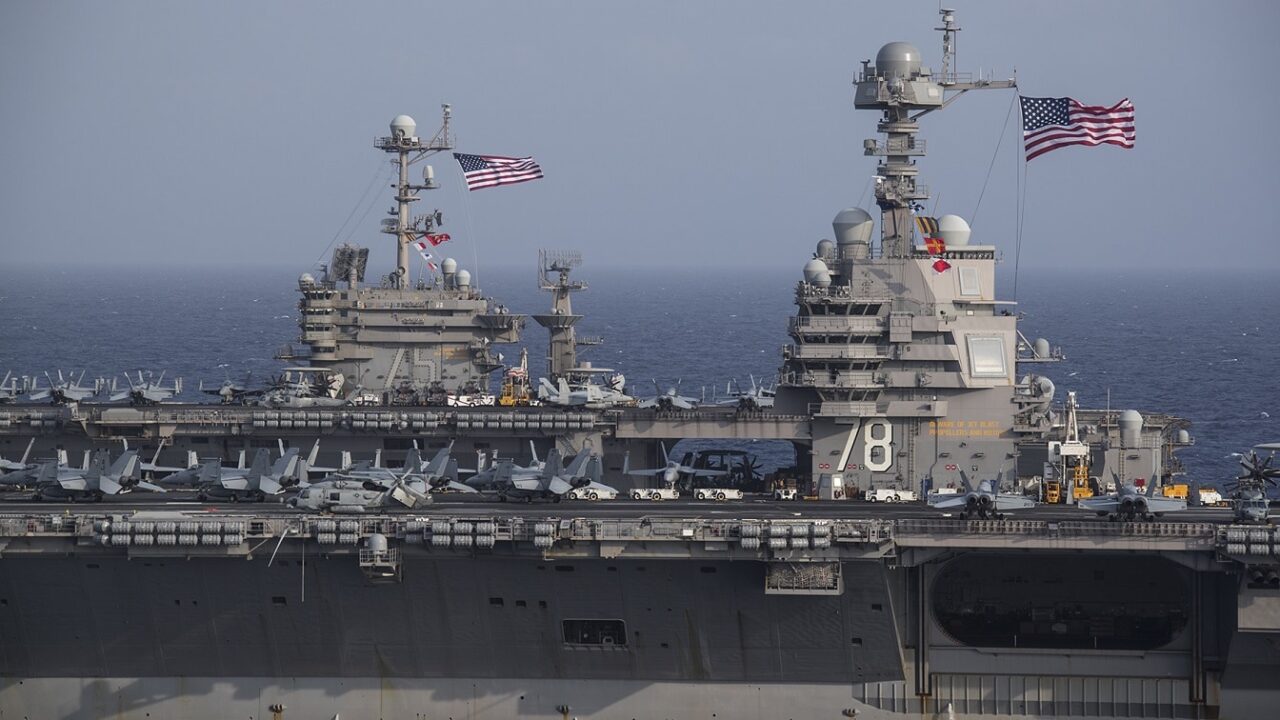Gerald R. Ford-class Aircraft Carrier: Too Expensive? Here is what the experts told 19FortyFive: No warship ever built is as expensive as the USS Gerald R. Ford (CVN-78) – the lead vessel of a new class of nuclear-powered aircraft carriers. As the largest warship ever constructed in terms of displacement, CVN-78 is an impressive vessel that will likely serve as a symbol of power projection throughout the world for decades to come.
And yet, even as she is loaded with new and innovative technologies, there remain issues with numerous systems that haven’t exactly worked as planned.
From the ship’s toilets, which regularly clog, to the ordnance elevators that didn’t function properly, numerous systems have had serious teething issues that have needed to be resolved.
Given those problems, it would be easy to dismiss the aircraft carrier as a vast money pit in the water and perhaps even suggest that CVN-78 is actually a bad carrier. That is a point this reporter even made earlier this month.
However, the experts told me I was wrong.
“There is nothing in the U.S. military arsenal as useful across the spectrum of operations than a large nuclear-powered aircraft carrier and its airwing. Period. Searching for economies is a fool’s errand,” explained Bryan McGrath, managing director at The FerryBridge Group, in an interview with 19FortyFive.
“Global maritime dominance is worth every penny,” McGrath added.
A Complex Question – With a Detailed Answer
It is easy to respect McGrath’s opinion on this matter, even if it doesn’t address the threat of hypersonic missiles or drones to modern carriers.
“It’s a complex question,” said James R. Holmes, J. C. Wylie Chair of Maritime Strategy at the Naval War College in an interview with 19FortyFive. “How much should you spend on a platform that an adversary could put out of action? While it’s commonplace to restrict this type of query to carriers, it applies equally to cruisers, destroyers, or anything else riding the waves.”
Holmes explained that a “good way to look at it” would be through the lens of Nimitz’s principle of calculated risk.
“Does the Ford class offer U.S. naval commanders the opportunity to do worse to an enemy force than an enemy force can do to our fleet,” pondered Holmes. “Key variables would be striking power in a war at sea, so you’d need to weigh such variables as the composition, range, sortie rates, and lethality of the air wing. These things could fluctuate over the hull’s fifty-year lifespan.”
Gerald R. Ford-class: A Big Target? Not So Fast!
The threat environment certainly has changed, but so have the defenses of the supercarriers.
It would be unwise to assume that any carrier is just a floating target at sea – even if Iran’s Revolutionary Guard Corps believes otherwise as it did when it created a faux carrier. The same holds true for the Chinese military, which created several carrier-shaped targets in the desert.

The U.S. Navy Gerald R. Ford-class aircraft carrier USS Gerald R. Ford (CVN-78) and the Nimitz-class aircraft carrier USS Harry S. Truman (CVN-75) underway in the Atlantic Ocean on 4 June 2020, marking the first time a Gerald R. Ford-class and a Nimitz-class aircraft carrier operated together underway. Gerald R. Ford is underway conducting integrated air wing operations, and the Harry S. Truman Carrier Strike Group remained at sea in the Atlantic as a certified carrier strike group force ready for tasking in order to protect the crew from the risks posed by COVID-19, following their successful deployment to the U.S. 5th and 6th Fleet areas of operation.
Warships, especially the Navy’s flattops, shouldn’t be seen as such an easy target.
“You’d obviously want to consider vulnerability, a function not just of what an enemy can throw at us but how well we can protect ourselves,” said Holmes “This is largely a question to address in the classified realm (a place I never go), but my sense is that our fleet is in a vulnerable spot right now but is starting to turn the corner, whether through things already fielded, like the SM-6 aboard picket ships, or joining the fleet, such as souped-up electronic-warfare gadgetry or directed-energy weapons. This variable, too, is apt to fluctuate with changes in the tactical environment. But my guess is the trendlines are starting to bend our way. If we can mitigate the vulnerability, then the CVN may be worth its price.”
Gerald R. Ford-class: The Cost Examined
The question then comes back to the cost – is the Gerald R. Ford-class simply too expensive for the job? Would the U.S. Navy be better served by more affordable warships?
Holmes suggested it is a matter of looking at opportunity costs and what else could be bought for the $14 billion that went into CVN-78. Could the risk be spread around by procuring more hulls/ships?
“You could look at it strictly as a carrier question – as I think it was CSBA (Center for Strategic and Budgetary Assessments) that did so a few years back – and consider conventional supercarriers as well as smaller types such as adapted LHAs, a.k.a. ‘Lightning carriers,'” Holmes continued. “I frankly don’t know what a conventional supercarrier would cost nowadays, but just spitballing, are two CVs better than one CVN? Or are 4-5 LHAs better than one CVN? I tend to be a mass guy, stressing quantity over exquisite quality, but there’s no pat answer.”

Ford-class Aircraft Carrier. Image Credit: US Navy.
Unlike in the world of computer or board games, there is no easy way to put a price tag on these items. There are design costs, R&D, etc. Holmes said that there are countless other details that would also need to go into this calculation.
“Which is probably why there are so many different opinions—there are many variables, few of which have objective values, and everyone puts stress on different things,” he suggested.
This needs to be considered even as USS Enterprise (CVN-65) will take 15 years to dispose of – for $1.5 billion. We shouldn’t immediately assume that the price tag is the same for every future nuclear carrier that reaches her respective end of life. Just as costs to build future warships is likely to fall, so too will the costs to scrap them.
“Enterprise is a one-off; she was designed with eight reactors, on the assumption that a reactor equals a boiler,” said Holmes. “Eight boilers in a conventional flattop, eight reactors in a CVN. Since then we’ve come a long way in plant design. Current CVNs have just two reactors, and there are additional advances in the Ford-class plant. These should simplify disposal of future hulls.”
The Environmental Issue
Finally, perhaps the environmental question needs to be raised. No doubt some readers will assume this is a covert attempt to support the Green New Deal, which is it not. Rather it is simply asking a very valid question. Are these floating reactors worth the risk?
While it is unlikely a terrorist in a skiff can sink a carrier, it isn’t impossible. Ships sink. Period! One only has to watch the 1997 film Titanic to be reminded of that fact. Yes, a modern supercarrier is better designed and is made to reduce the likelihood that one could sink, but warships are made of steel, which simply doesn’t float. And should a nuclear-powered carrier sink, for whatever reason, that should be considered now.

USS Gerald R. Ford. Image: Creative Commons.
“It does seem hazardous to have all these radioactive gizmos floating around the world’s oceans and seas, where they could be sent to the bottom,” added Holmes. “Not sure we’ve given the environmental dimension of strategy the attention it rates.”
Expert Biography: A Senior Editor for 19FortyFive, Peter Suciu is a Michigan-based writer who has contributed to more than four dozen magazines, newspapers, and websites with over 3,000 published pieces over a twenty-year career in journalism. He regularly writes about military hardware, firearms history, cybersecurity, and international affairs. Peter is also a Contributing Writer for Forbes. You can follow him on Twitter: @PeterSuciu.

